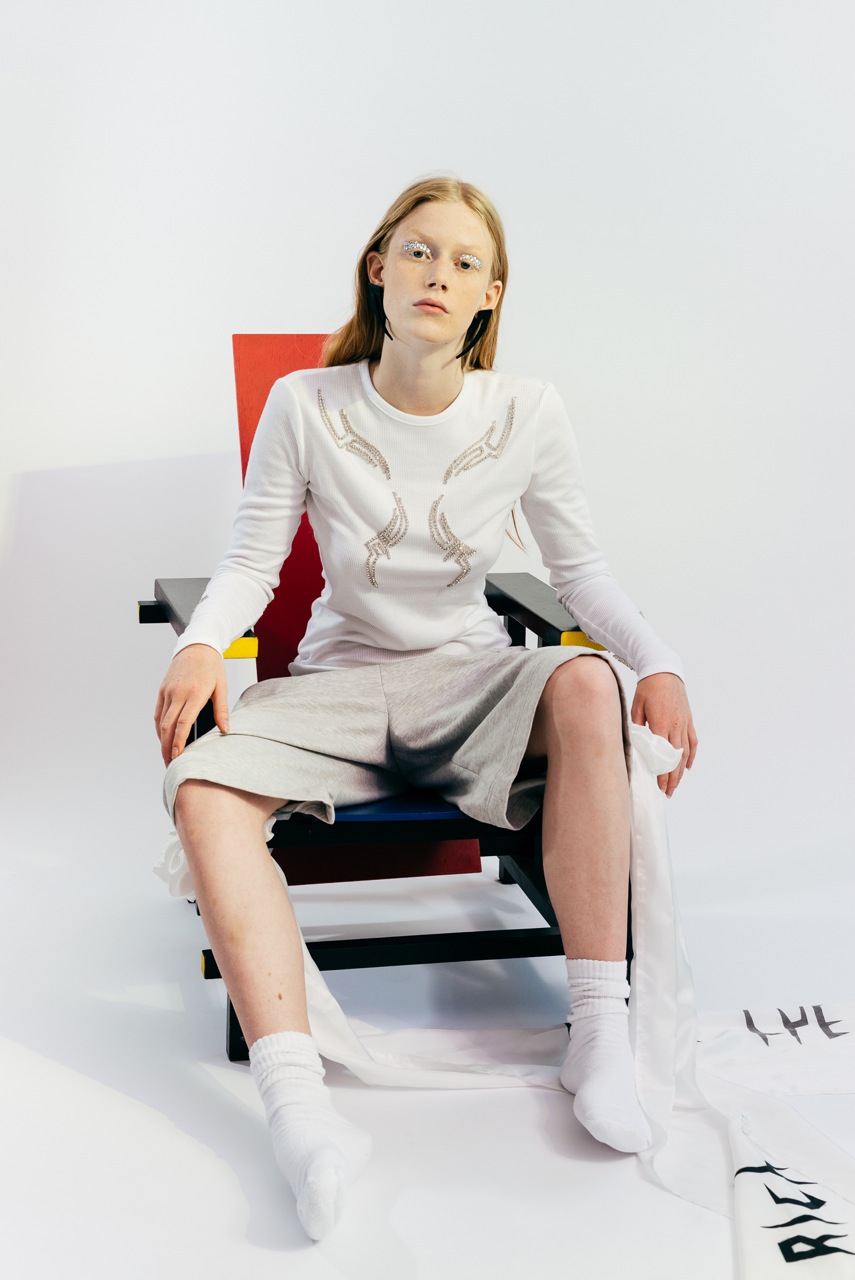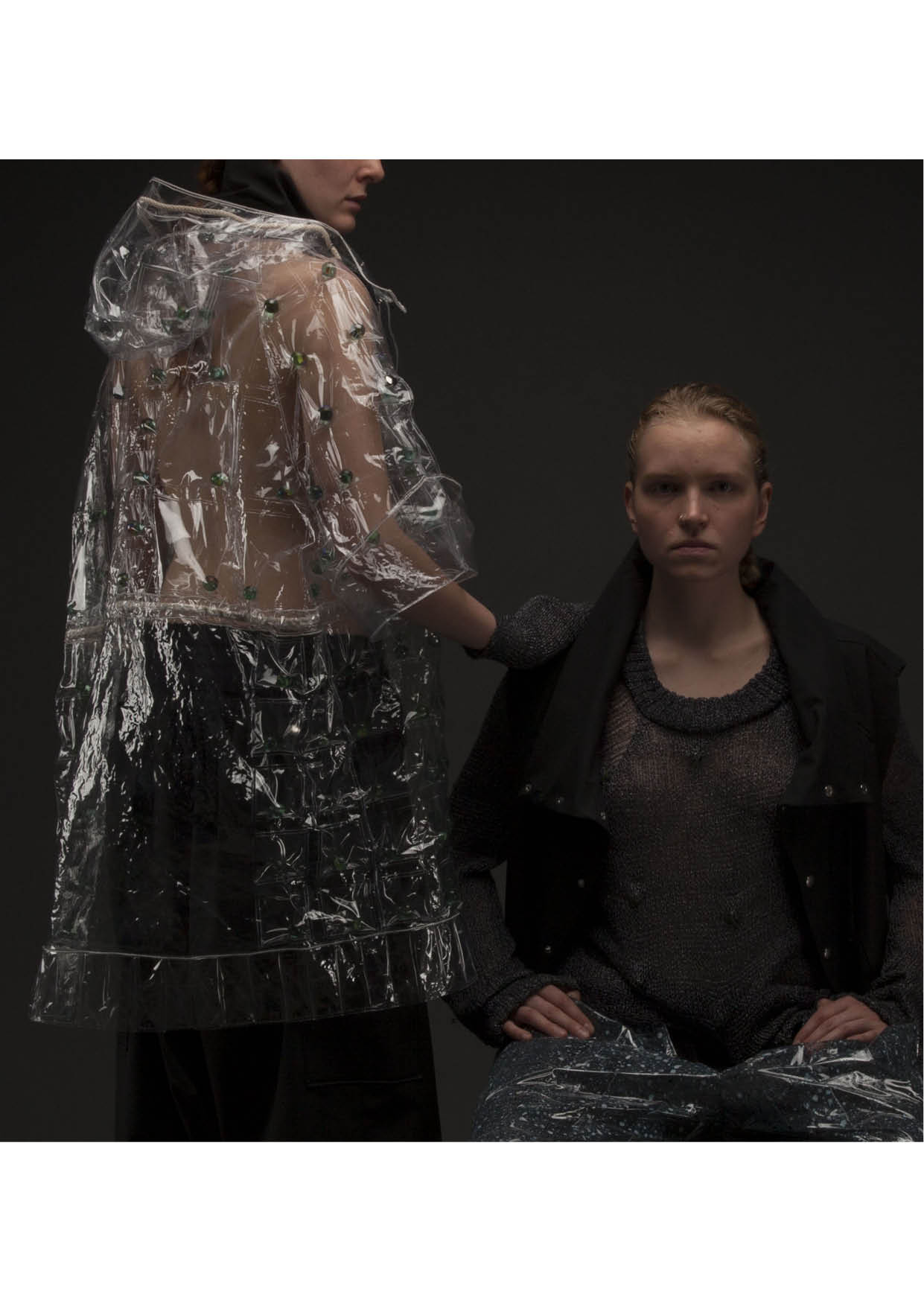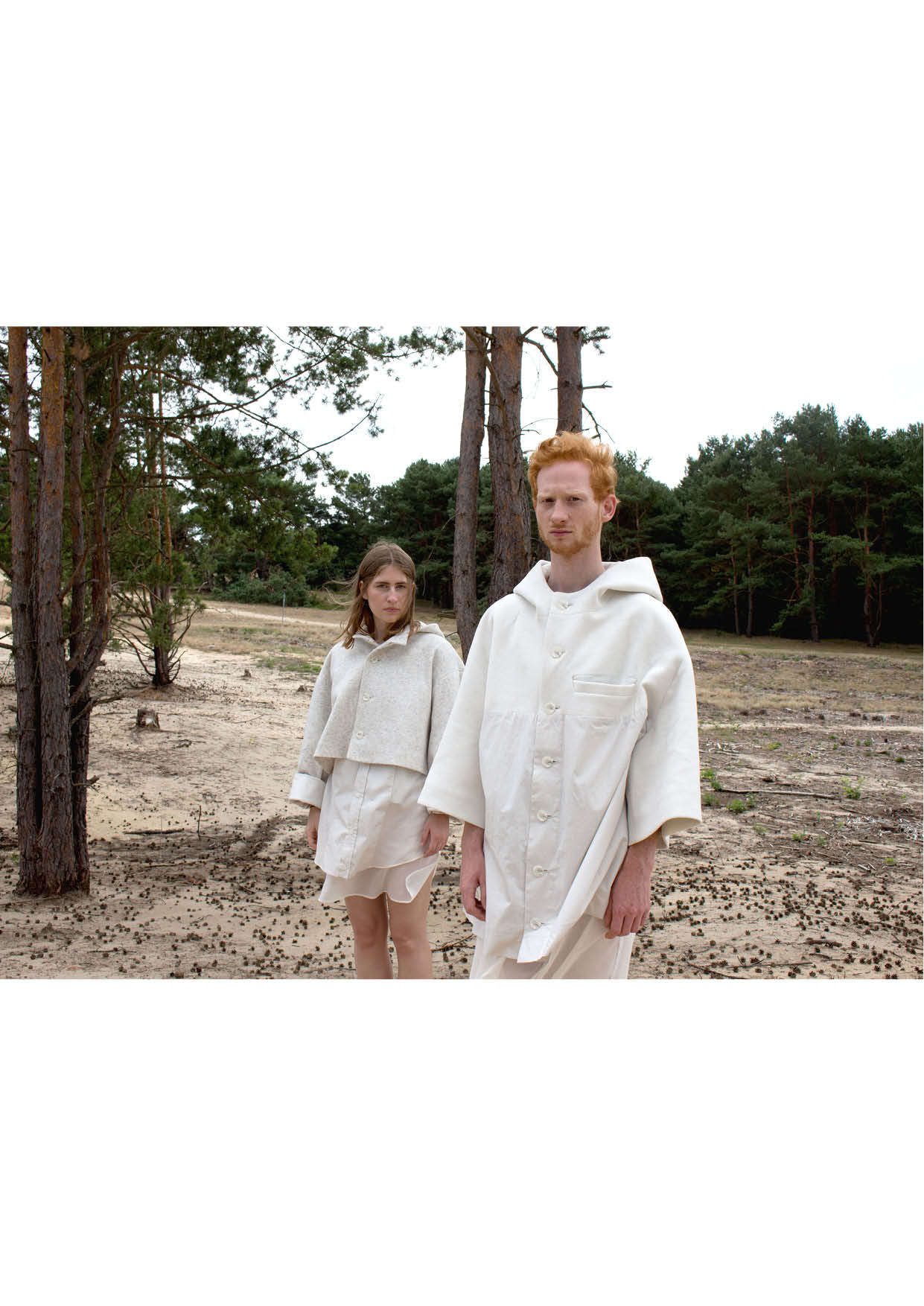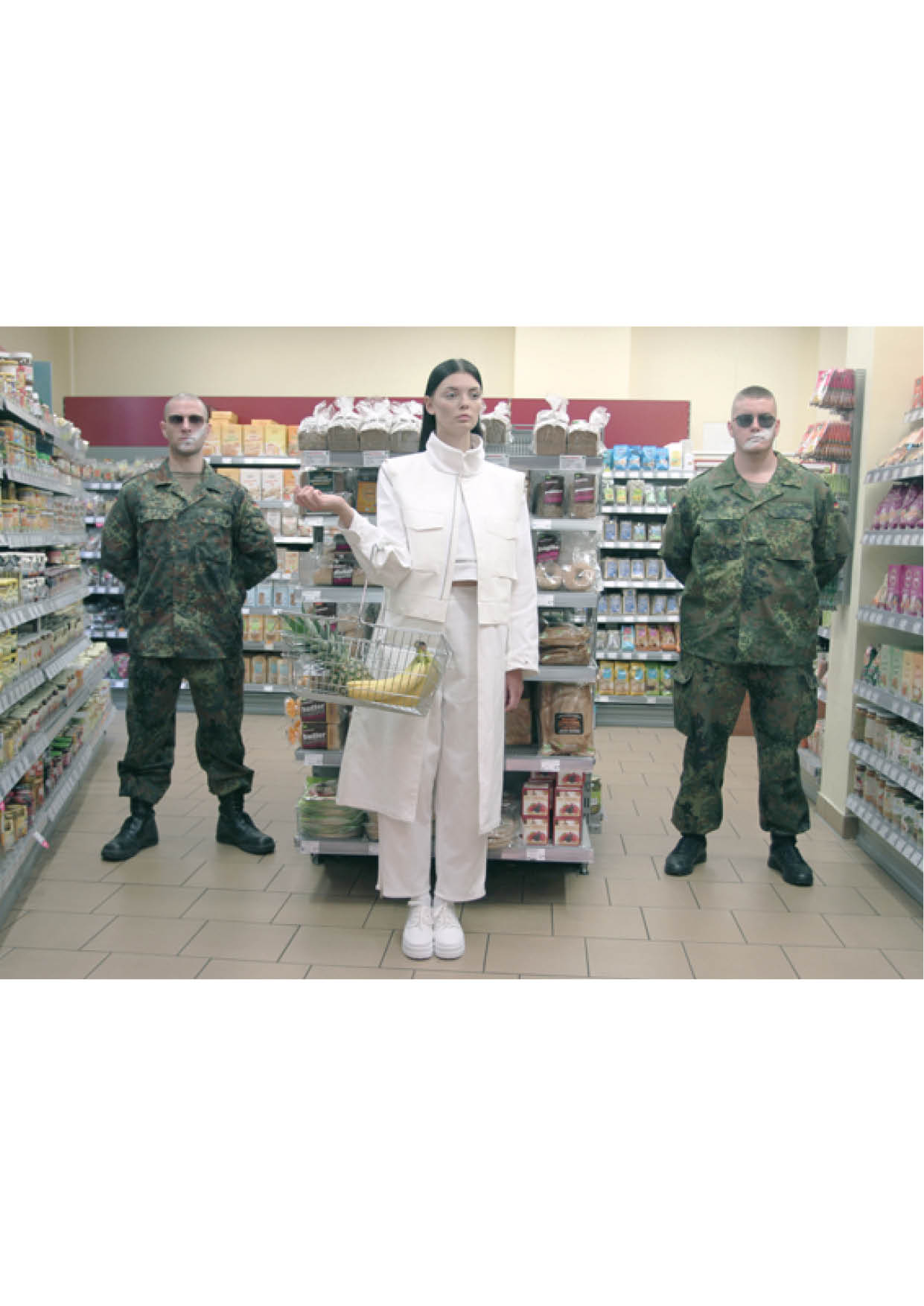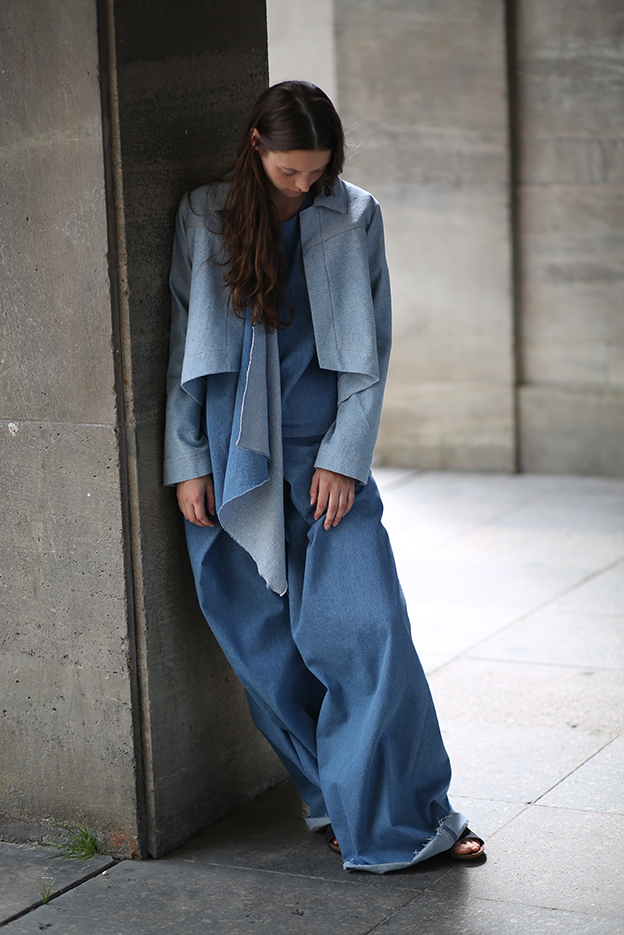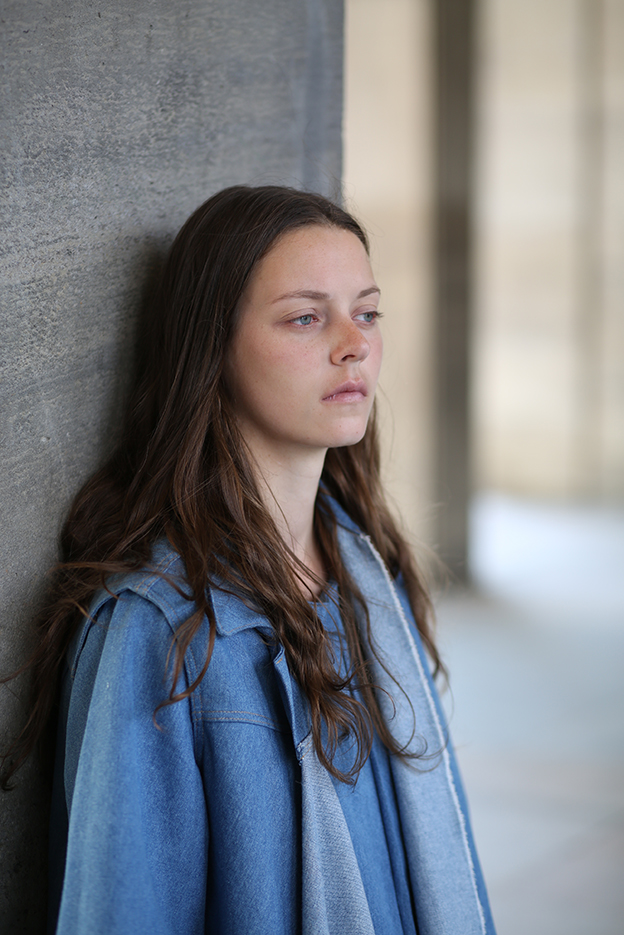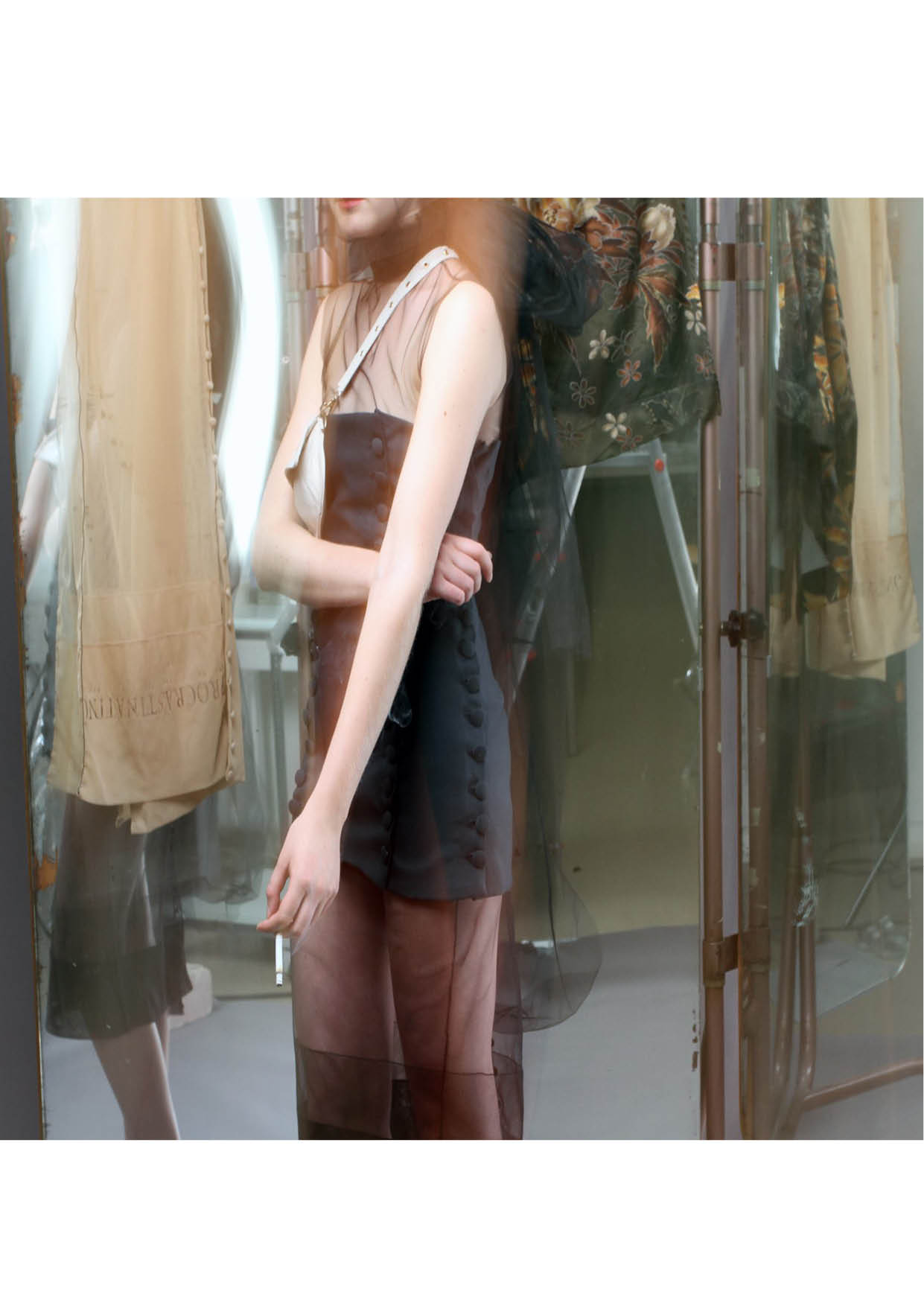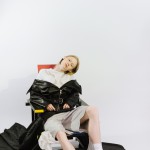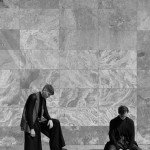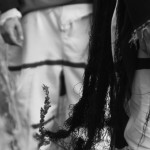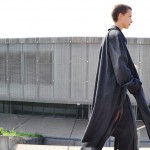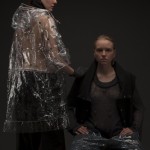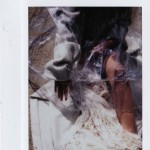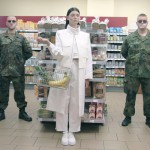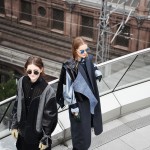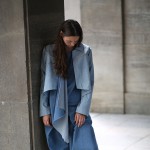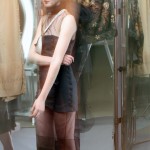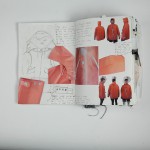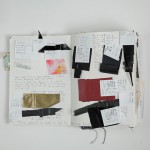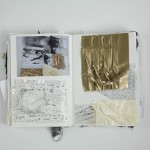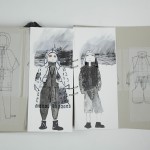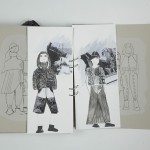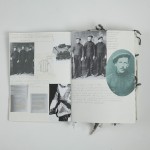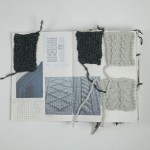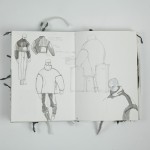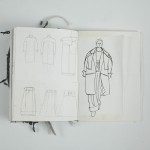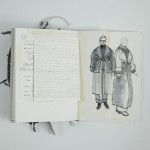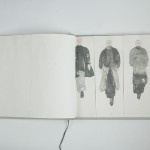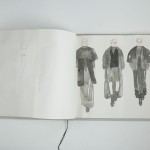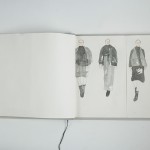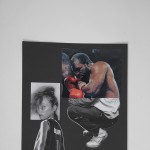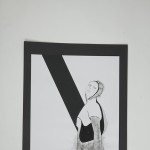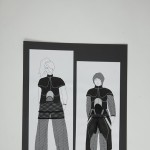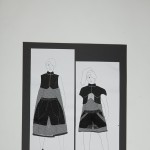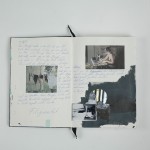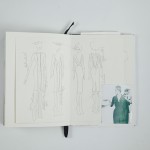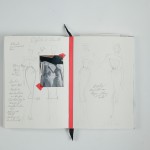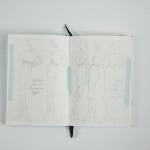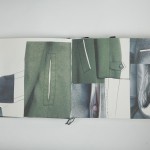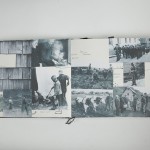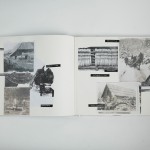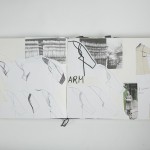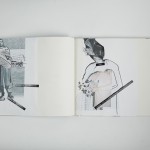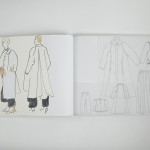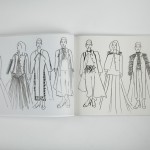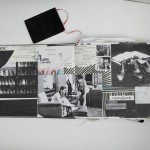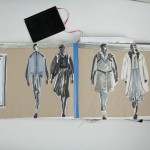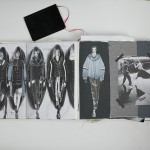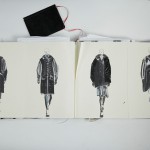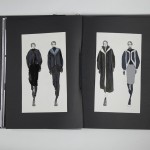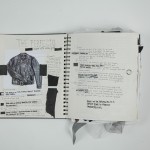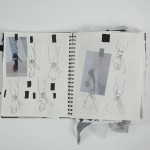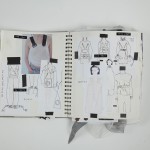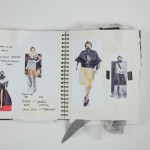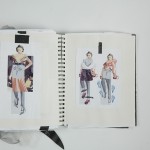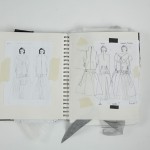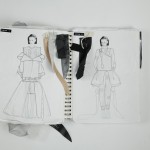- Liselotte Bramstang
- Liselotte Bramstang
- Jan Geiger Dedio
- Jan Geiger Dedio
- Megan Ashton
- Megan Ashton
- Rosina Koch
- Rosina Koch
- Viktoria Pichler
- Viktoria Pichler
- Maja Svartaker
- Maja Svartaker
- Ronja Kösters
- Ronja Kösters
- Milan Friedrich
- Milan Friedrich
- Phoung Anh Lee
- Phoung Anh Lee
- Antonia Schreiter
- Antonia Schreiter
- Lene Jürgensen
- Lene Jürgensen
- Katerina Ivanova
Remaster // SS 2015 // Grundstudium
„In der Mode machen tatsächlich viele das, was man als „remixen“ bezeichnet, aber häufig ist es keine bewusste Entscheidung. Ob man enge Hosen, weite Hosen, einen übergroßen Mantel oder ein transparentes Hemd entwirft, alles durchläuft das eigenen System und steht so automatisch in Bezug zur eigenen Ästhetik.“ Raf Simons
Modeklassiker erzählen ein Stück Modegeschichte, aber oft wissen wir gar nicht genau wann und wo sie ihren Ursprung hatten.
Die Hintergründe von Kultobjekten und Klassikern in der Mode sind vielseitig und spannend. Viele Mythen ranken sich um Kleidungsstücke, Schuhe oder Taschen, die wir heute ganz selbstverständlich Tag für Tag tragen.
Jeder Studierende soll sich auf die Suche machen nach seinem ganz persönlichen Klassiker, Kultobjekt / Icon / Accessoires / Kleidungsstück
– welches als Grundlage dieses Projektes dient.
Was ist ein Klassiker für jeden Studierenden ganz persönlich?
Welche Geschichte erzählt er uns? Materialität, Silhouetten, Funktionalität, Wertigkeiten, Verarbeitung, Identität – das Bennen und Erkennen dieser formellen und theoretischen Aspekte dient als Recherche für die gestalterische Grundlage des eigenen Konzeptes. Sich zu positionieren und einen wegweisenden Ausdruck der eigenen Zeit finden – Mode schaffen.
In der zeichnerisch zu entwickelnden Kollektion, bestehend aus 20 Silhouetten, sollen deutlich Motive zitiert und neue Varianten entwickelt werden.
2 Silhouetten werden umgesetzt, wobei die erste Silhouetten ein Remix des Originals ist und die 2 Silhouette der Ersten.
Lehrende: Prof. Wowo (Waldemar) Kraus, KM Jana Patz, Silvia Schüller, Dorothèe Warning
Studierende: Jan Geiger Dedio // Antonia Schreiter // Ronja Kösters // Lene Jürgensen // Megan Ashton // Viktoria Pichler // Liselotte Bramstang // Maja Svartaker // Katerina Ivanova // Rosina Koch // Phoung Anh Lee // Milan Friedrich
//Skizzenbuch: Maja Svartaker
- Maja Svartaker
- Maja Svartaker
- Maja Svartaker
- Maja Svartaker
- Maja Svartaker
- Maja Svartaker
- Maja Svartaker
The starting point of this project was a Swedish rain jacket called a Galon jacket (Galon being a swedish invention from the 40’s). The task was to choose a classic garment, and it seemed important to choose something that would be part of a collective awareness, something that people from a variety of cultures, social groups and ages could relate to. I chose the Galon jacket because it fulfilled that criteria, but it is also someting that I have a personal relationship to.
You are likely to find an old Galon jacket in almost every dusty summer house in Sweden, most people born and raised there recognizes the sort of sound it makes when you move around and what it feels like to take it off when it’s wet. At some point I realized that the jacket represented a somewhat childish/romantic idea about identity caught in a piece of clothing.
Research done on the garment, aswell as rain clothing in general, led me on to fishermen and sailors, and two very much so different worlds; on the one side a romantic and escapistic idea about life at sea, the old silent fishermen, bottle ships, travelling, beautiful objects flushed ashore (Strandgut), seashell picking at the beach, hanging up floats in a three in the garden to make one’s house come off as though it’s located at the beach etc. It is especially tempting to capture these shall we say longings in mezmerising objects.
On the other side is the actual fisherman/seaman occupation. An actual life working at sea is often categorized by long periods of solitude, a very masculine working envioronment and extreme weather conditions. It is very hard work both physically and mentally. The actual modern working garments of fisher men have served as base for the silhouettes in this collection.
I’ve tried to unite and interpret the two worlds in fabric experiments, all of them achieved trough welding the material (welding is often used in rain garments as not to pierce the fabric and hence create possabilities for water to come in). In each piece, I’ve tried to create a clash between escapism, simplification and actual reality, as a way of dealing with the topic of romantic stereotypes and collective awareness.
//Skizzenbuch: Jan Geiger Dedio
- Jan Geiger Dedio
- Jan Geiger Dedio
- Jan Geiger Dedio
- Jan Geiger Dedio
- Jan Geiger Dedio
- Jan Geiger Dedio
- Jan Geiger Dedio
- Jan Geiger Dedio
- Jan Geiger Dedio
„WAITING FOR KAIROS“
Kairos beschäftigt sich mit dem Rollkragenpullover, im besonderen mit dem Nonkonformismus, der ihm innewohnt. Zunächst getragen von Fischern der englischen Kanalinseln wird er in den 40er Jahren zum Erkennungsmerkmal der Existentialisten, der Bohème und der Avantgarde. Wichtige Momente sind der Bruch mit Konventionen und das Spontane, formelle Kleidung wird informell. Thema ist der Mann, der sich mit aller Konzentration einem Sachverhalt zuwendet, ihn beobachtet und reflektiert. Dieser Prozess schafft eine intensive Atmosphäre, das Warten auf etwas noch nicht Greifbares, eine Idee, eine Vision. Der Ausgangspunkt für die Silhouette ist der dreiteilige Herrenanzug mit Mantel. Großzügiges Volumen, Layering und grobe Wollqualitäten nehmen den Outfits das streng Formelle. ! Grob- und Feinstrick kontrastieren mit dichten Webstoffen. Der ‘sehr angezogene’ Look der Kollektion stellt Kopf und Hände in den Fokus – Denken und Handeln
//Skizzenbuch: Megan Ashton
- Megan Ashton
- Megan Ashton
- Megan Ashton
- Megan Ashton
- Megan Ashton
- Megan Ashton
Exploring the difference between looking strong and being strong. A girl, a woman, taking on the appearance of A fighter, a boxer, all muscles. Protection. You can act tough and intimidating, puff yourself out, strut around, inflict fear; but this is not bravery, it is not true strength, this is a front. This is Bravado. Look through the gaps in this hard exterior shell. Glimpse the person within. Daring and fearless. Real bravery comes from hard work, courage to change and stand up to your convictions, even when it is difficult and everything seems to be fighting against you. Don’t be afraid to be different.
// Skizzenbuch: Katerina Ivanova
- Katerina Ivanova
- Katerina Ivanova
- Katerina Ivanova
- Katerina Ivanova
- Katerina Ivanova
mornings – were the most wonderful time to spend. she liked getting up early, because then she would have time for her ceremony of getting ready. she loved to get dressed in general, although it were the little details of her routine that would make her feel wholesome and at peace. like the procedure of painting her lips, when she was in the mood for red; or closing the buttons of her blouse which made her feel graceful and sophisticated at once. and spending a while brushing her hair; just brushing her hair. she liked the way her tight dress would devour her curves, partly because she had silky layers underneath, only for her to know; partly because it was her way of seducing herself.
// Skizzenbuch: Viktoria Pichler
- Viktoria Pichler
- Viktoria Pichler
- Viktoria Pichler
- Viktoria Pichler
- Viktoria Pichler
- Viktoria Pichler
- Viktoria Pichler
The project „Remaster“ starts with the choice of a classic piece of clothing, which is important to me personal. I chose the „Hubertusmantel“ of my father, it is a special kind of coat, which is worn by many Austrian men on special occasions. The coat is formal and made out of loden. By reconstructing the piece of cloth I found out that it has a total different processing than normal coat constructions. The sleeves are finished with lining as a separate piece of clothing, as well as the corpus. The armhole has a open construction, because the coat has it’s origin in hunting clothes, the arm construction was created to guarantee mobility to shoot. I started to work with this mobility, by giving the wearer the possibility of moving. That fact was the starting point of my collection of two sewn outfits and drawn collection of 20 looks. Two important inspirations for „remaster“ are the photo box of my family with pictures of my working relatives on the farm and the research of this specific coat and sleeve construction. Important for my design was home, tradition, handicraft and generations. Most people leave home, but we all take values, moments and family backgrounds with us. This makes every person special. By showing my stock, I try to combine the feeling of where I come from with the fact that the world is open to me. With the use of a crafting technique with straw and a modern design I remastered my personal classic in my collection.
//Skizzenbuch: Antonia Schreiter
- Antonia Schreiter
- Antonia Schreiter
- Antonia Schreiter
- Antonia Schreiter
- Antonia Schreiter
- Antonia Schreiter
- Antonia Schreiter
GEN · T · LE · MAN
The Budapester is characterised by its special hole pattern (Lyra perforation) and the enormous quality. A shoe can be composed of up to 30 pattern pieces and each layer is assembled with highly precision. This explains the special quality of craftsmanship and the durability of up to 20 years. My grandfather inspired me to choose this men’s shoe – I’ve always looked up to him from when i was very little and admired his way of dressing and the importance he put on details for his outward appearance. That took me back in a time/generation (forties) where strict dress conventions determined the society. Wearing no vest with a suit was considerd a stylistic inconsistency. I was especially fascinated by the Gentlemen’s scene – a world that offers an amazing number of accessories and details and a way of life which is hard to find nowadays. The collection reflects the „being perfectly dressed“ and puts the focus on paying attention to every detail and to use each layer systematically. I used photographies of brogues by printing and drawing my designs upon them. This way I created my design concept. The question I asked myself was how can you set the processing and the quality of this shoe in a textile context? The starting point for the patterns was the three-piece suit and the man’s overcoat. Nevertheless, the silhouettes of the collection play with volume, and break out of the line of the classic boxy conventions. An important role is played by material and color contrasts, as well as the confrontation of the closed processing like the three-piece suit and the robust processing of Budapester.The processing of leather takes up the Lyra perforation of the shoe and can be found in details of the garments. Smooth goatskin and slightly textured wool are combined with flowing and transparent fabrics to create a clear contrast in the materiality.
//Skizzenbuch: Liselotte Bramstang
- Liselotte Bramstang
- Liselotte Bramstang
- Liselotte Bramstang
- Liselotte Bramstang
- Liselotte Bramstang
- Liselotte Bramstang
- Liselotte Bramstang
- Liselotte Bramstang
- Liselotte Bramstang
- Liselotte Bramstang

